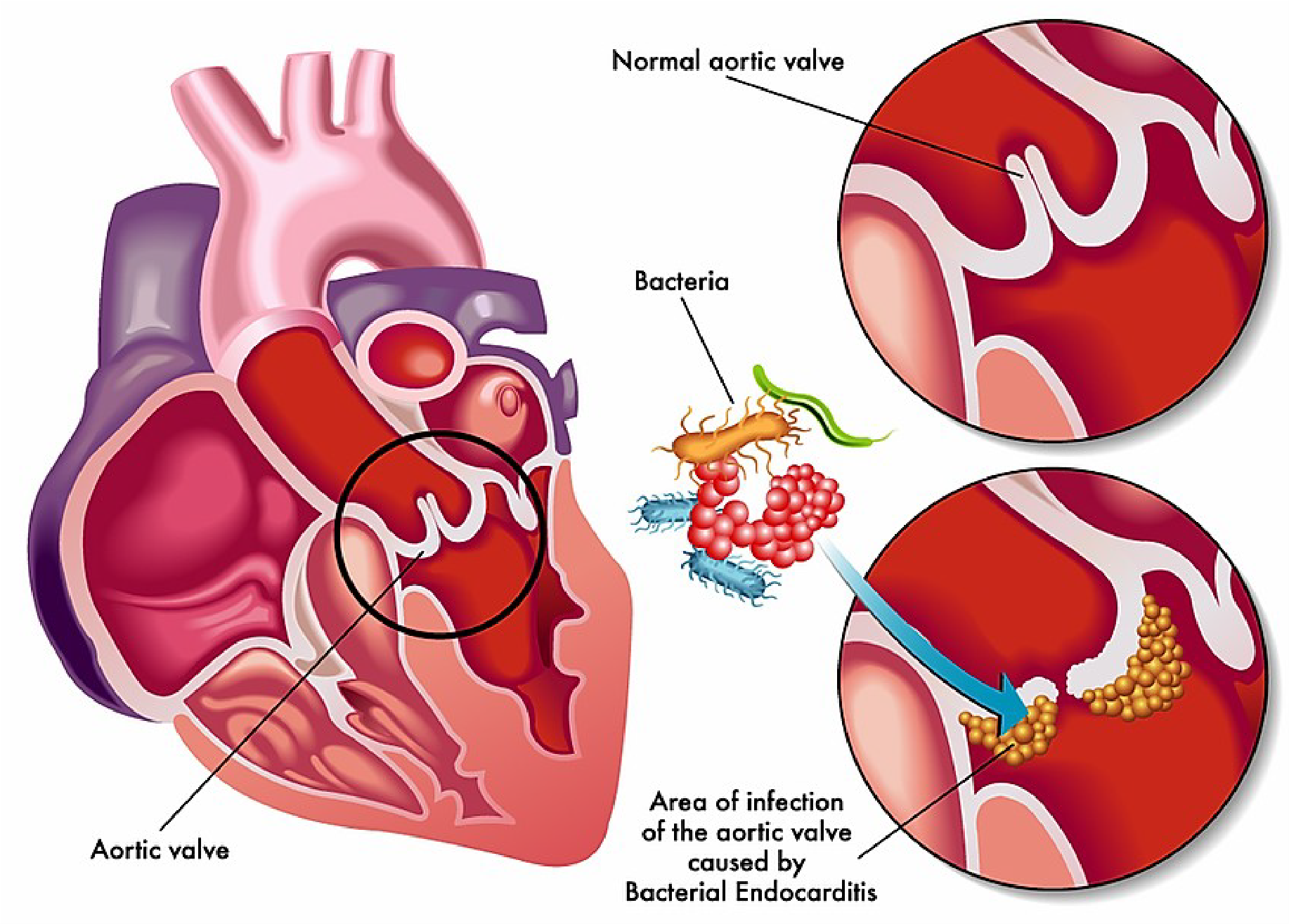Infective endocarditis is most often caused by
A virus
A fungus
A bacterium
Rickettsiae
The Correct Answer is C
 Infective endocarditis is an infection of the endocardium (the inner lining of the heart), which can lead to damage of the heart valves. It is most commonly caused by bacteria, although fungi and other microorganisms can also cause the condition. The bacteria that most commonly cause infective endocarditis are Streptococcus and Staphylococcus species.
Infective endocarditis is an infection of the endocardium (the inner lining of the heart), which can lead to damage of the heart valves. It is most commonly caused by bacteria, although fungi and other microorganisms can also cause the condition. The bacteria that most commonly cause infective endocarditis are Streptococcus and Staphylococcus species.
Nursing Test Bank
Naxlex Comprehensive Predictor Exams
Related Questions
Correct Answer is A
Explanation

Dyspnea is a term used to describe difficulty breathing or shortness of breath. It is a subjective symptom and can be experienced differently by different people. Common signs and symptoms of dyspnea include feeling short of breath, chest tightness, rapid breathing, wheezing, coughing, and a feeling of suffocation. The work of breathing may be increased, and accessory muscles may be used to help with breathing. Exercise may worsen symptoms of dyspnea in some individuals, while in others, it may improve symptoms.
Correct Answer is D
Explanation
Tachycardia refers to a heart rate that is faster than the normal range, which is typically considered to be between 60 and 100 beats per minute in adults. A heart rate of 110 beats per minute is above the normal range and is considered tachycardia.
Whether you are a student looking to ace your exams or a practicing nurse seeking to enhance your expertise , our nursing education contents will empower you with the confidence and competence to make a difference in the lives of patients and become a respected leader in the healthcare field.
Visit Naxlex, invest in your future and unlock endless possibilities with our unparalleled nursing education contents today
Report Wrong Answer on the Current Question
Do you disagree with the answer? If yes, what is your expected answer? Explain.
Kindly be descriptive with the issue you are facing.
